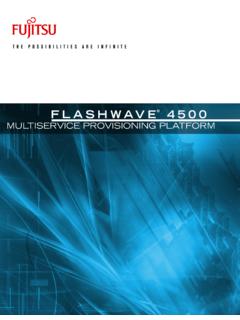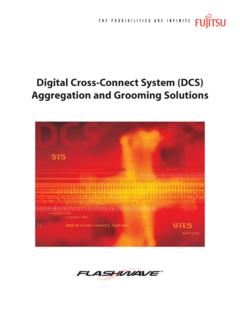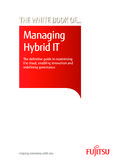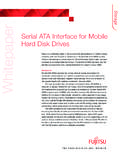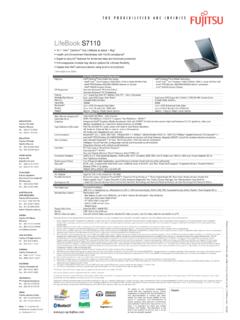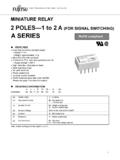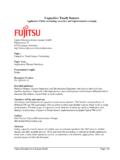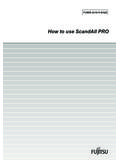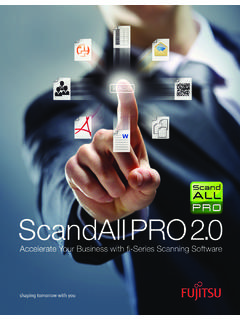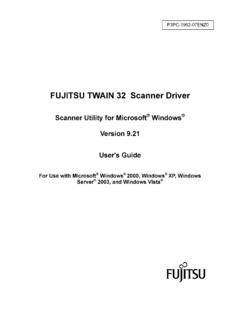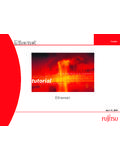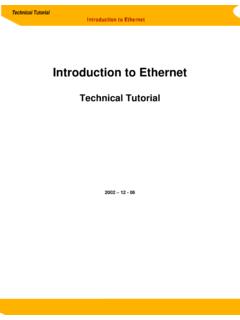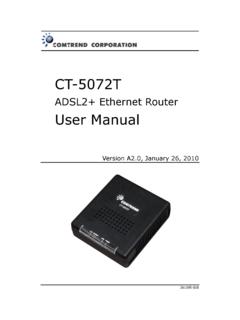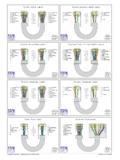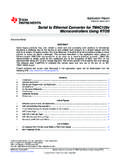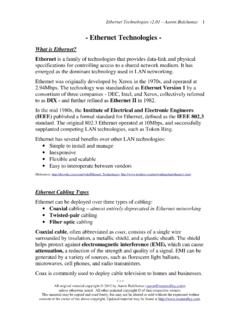Transcription of Ethernet Service OAM: Overview, Applications, …
1 Ethernet Service OAM: Overview, Applications, Deployment, and IssuesFUJITSU NETWORK COMMUNICATIONS Telecom Parkway, Richardson, Texas 75082-3515 Telephone: (972) 690-6000(800) 777-FAST ( ) the number of Ethernet Service instances grows, Service providers will require a robust set of management tools to maintain Ethernet Service networks. The positive news is that IEEE , ITU SG 13, and the MEF have been working in close cooperation to develop complimentary standards for multi-domain Ethernet Service OAM. Ethernet Service OAM encompasses Fault Management and Performance Management capabilities that are incorporated in NEs that support Ethernet services . In a layered network model, these capabilities are active at the Ethernet Service goals of this paper are to provide an overview of relevant standards, summarize the multi-domain model and key capabilities of Ethernet Service OAM, define the major protocol aspects, and provide some examples of how Service providers may use this toolkit of OAM functionality.
2 The paper will address how the requisite technology can be integrated into network elements, such as provider edge bridges, and will summarize relevant operational issues and open standards Service OAM Relevant StandardsThe following forums are standardizing the relevant Ethernet Service OAM technology: The IEEE committee is developing IEEE Connectivity Fault Management The ITU-T SG 13 Q5 WG is developing recommendation OAM Functions and Mechanisms for Ethernet Based Networks The MEF is developing MEF Service OAM Requirements & Framework Phase 1 Technical SpecificationITU-T SG 13 recently approved , however and the MEF standard are still works in progress.
3 This paper will provide a snapshot of where this technology is at today. Open issues and topics not yet resolved will be highlighted. The three committees are working in close cooperation to ensure that the family of Ethernet Service OAM standards is compatible and complimentary. There are differences in the terminology used by IEEE , ITU-T, and MEF, and this paper will highlight and clarify these and ITU SG 13 Q5 WG are working together to define a common frame format and protocol elements. IEEE is defining the protocol element encoding and OpCodes for a specific set of functionality under CFM. IEEE is also defining the detailed implementation of CFM in an standard VLAN bridge.
4 ITU-T SG 13 and MEF standards will reference the base CFM functionality and add extensions for additional OAM functionality such as Performance Management and Discovery. ITU-T has been developed to be consistent with the ITU Ethernet Layer Network Architecture, and Ethernet Equipment recommendations. There are also plans in ITU-T to extend the Ethernet Service OAM protocol to support Ethernet Protection frame format and base functionality is generally agreed across and It is expected that IEEE will be an approved IEEE 802 standard by the end of 2006. The MEF recently agreed to combine previous Fault Management and Performance Management drafts into a common specification.
5 The MEF standard will build on agreements already reached by IEEE and ITU-T SG 13. The MEF standard should be also completed by the end of 2006. It is important to note that the standard Ethernet Service OAM protocol is extensible so that phase 2 standards or equipment vendors can add additional functionality. For your convenience, a list of acronyms can be found at the end of this NETWORK COMMUNICATIONS Telecom Parkway, Richardson, Texas 75082-3515 Telephone: (972) 690-6000(800) 777-FAST ( ) Service OAM Technology OverviewMulti-domain Network ModelRecognizing the fact that Ethernet networks often encompass multiple administrative domains, IEEE , ITU-T SG 13, and the MEF have adopted a common multi-domain network model.
6 This model is illustrated in Figure OAM LevelCustomerEquipmentCustomerEquipmentO perator ABridgesOperator BBridgesProvider OAM LevelProvider DomainOperator OAM LevelOperator OAM LevelMEG End PointMEG Intermediate PointLink OAMLink OAMS erver/TransportETHF igure 1: Multi-domain Ethernet Service OAMThe Service network is partitioned into customer, provider, and operator maintenance levels. Providers have end-to-end Service responsibility. Operators provide Service transport across a subnetwork. The ETH Layer consists of customer Service Ethernet frames that may include both customer VLAN tags and provider VLAN Server/Transport Layer consists of underlying packet transport links.
7 These links may be single hop Ethernet links or multihop MPLS pseudowire or SONET/SDH paths. For pseudowires or SONET/SDH, the Server/Transport layer may consist of multiple sub-layers. Appropriate layer OAM mechanisms are used at these sub-layers. For Ethernet links, IEEE link OAM can be used. For MPLS pseudowires, ITU-T SG 13 has developed recommendation , and IETF is developing appropriate layer OAM protocols such as VCCV and MPLS LSP Ping. The focus of this paper is on Ethernet Service Layer OAM, but it will address layer interactions in the course of generating and the MEF use the following terminology to describe the entities that are managed and the management functional components.
8 An ME is an entity that requires management. A MEG includes a set of MEs that satisfy the following conditions: MEs in an MEG exist in the same administrative domain and have the same ME level. MEs in an MEG belong to the same Service provider VLAN (S-VLAN). In ITU-T terminology, this is a point-to-point or multipoint Ethernet NETWORK COMMUNICATIONS Telecom Parkway, Richardson, Texas 75082-3515 Telephone: (972) 690-6000(800) 777-FAST ( ) a point-to-point Ethernet connection/S-VLAN, an MEG contains a single ME. For a multipoint Ethernet connection, a MEG contains n*(n-1)/2 MEs, where n is the number of Ethernet connection end points. An MEP is a maintenance functional entity that is implemented at the ends of a ME.
9 It generates and receives OAM frames. A ME represents a relationship between two MEPs. An MIP is a maintenance functional entity that is located at intermediate points along the end-to-end path where Ethernet frames are bridged to a set of transport links. It reacts and responds to OAM 1 illustrates MEP and MIP locations. MEPs are implemented at administrative domain boundaries. Figure 1 also illustrates that for a given S-VAN, an NE port may implement multiple MEPs and MIPs contingent on the number of domain levels. MEP functions may also be used for the server layer packet transport IEEE , the terms Maintenance Entity, Maintenance Level, and Maintenance Domain have the same meaning as in ITU-T IEEE uses the term MA in the same context as MEG.
10 For IEEE , MEPs and MIPs are the short form of MA End Points and Intermediate Points. They are functionally equivalent to ITU-T MEPs and Management Functions OverviewEthernet Service OAM encompasses the following Fault Management functions:1) Continuity Check Messages (CCM) MEPs periodically exchange Continuity Check OAM messages to detect loss of continuity or incorrect network connections. A CCM is multicast to each MEP in a MA/MEG at each administrative level. CC Messages can also be used to perform two way dual-ended Frame Loss measurements. A Flags field is incorporated in CC Messages. This field includes a bit for Remote Defect Indication (RDI) and an indication of the period at which CC Messages are ) Loopback Message (LBM) MEPs send loopback messages to verify connectivity with another MEP or MIP for a specific MA/MEG.
